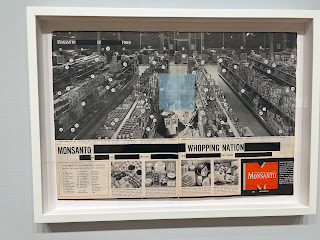The Life History of a Sticky Note: Human Use and Environment Concerns
By: Kyanna Gonzalez
Sticky notes tell a life history of humans that starts from their production and ends when humans dispose of them. Invented in 1968, Dr. Spencer Silver, a scientist at 3M, was researching different adhesives when he accidentally discovered microspheres, particles within an adhesive that can be attached to multiple surfaces while still retaining their overall stickiness quality. Even more, the famous color of the original sticky note, yellow, was also by accident as this was the only color of paper available in the labs during the first rounds of testing and production. Dr. Silver’s invention of a re-stickable adhesive transitioned from a removable bookmark to a resource for communication by the 1980s allowing humans to produce, communicate and express themselves better. Sticky notes began growing popular in professional settings like offices, and schools where a lot of writing and tracking were involved. Sticky notes can be used for more than just writing things down and communicating messages. Other ways sticky notes can be used or repurposed include using them; as a cup coaster, to remove lint from clothes, in arts and crafts, and as a bookmark.
Although consisted of paper, a pressure-sensitive acrylate (PSA), and microspheres, sticky notes are compostable and recyclable due to their non-toxic adhesive and paper material. Depending on human disposal, sticky notes like most paper can take up to five months to decompose if not disposed of properly. This contributes to the waste within landfills and the production of Methane gases emitted into the atmosphere. Another way sticky notes contribute to environmental impacts also includes deforestation due to the wood needed to produce this product.
The creation of the sticky note can be used as an example to show humans' impact and the permanent damage to the earth’s geological composition causing for a geological shift in eras. The transition away from the Holocene era and towards a new era can be evident in the number of radioactive elements present due to nuclear waste and radiation, plastic, concrete, and domesticated chicken bones found within the geological composition of the earth’s layered surface. Examining the life history of a sticky note can illustrate a transition from the Holocene era to the Anthropocene era as the object in itself is an example of; humans' ability of higher cognitive thinking and written language and the use of plastic as a material for human purpose. Sticky notes have no purpose for other animals except humans and are a prime example of how humans have turned naturally occurring live forms like trees, into a consumable products for human use while damaging the environment.


Comments
Post a Comment